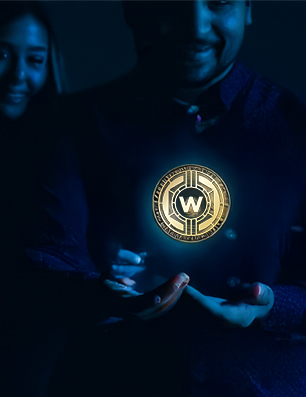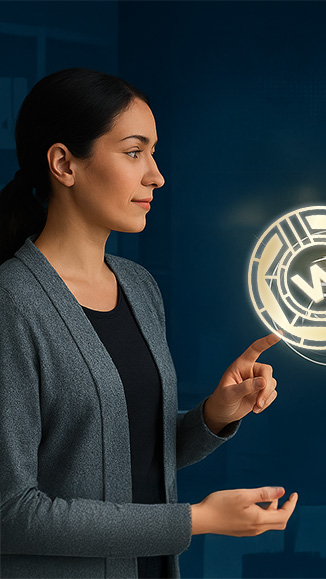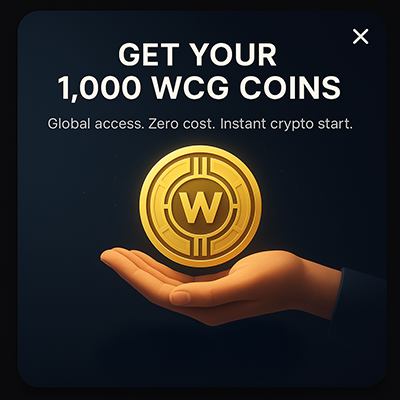- Written by: BlockNewsAfrica
- Wed, 31 Mar 2021
- South Africa
Cartesi is taking smart contracts to the next level. It is a chain-agnostic layer-2 infrastructure, solving the pressing problem of scalability on the most important blockchains. Most notably, Cartesi implements a unique Linux-supporting VM, rollups and side-chains to revolutionize the way developers create blockchain applications, allowing them to use mainstream software components. Using Cartesi, blockchain applications […] The post Cartesi As A Leading Layer-2 Platform For The Development Of Smart Contracts appeared first on BlockNewsAfrica.
Cartesi As A Leading Layer-2 Platform For The Development Of Smart Contracts
Cartesi is taking smart contracts to the next level. It is a chain-agnostic layer-2 infrastructure, solving the pressing problem of scalability on the most important blockchains. Most notably, Cartesi implements a unique Linux-supporting VM, rollups and side-chains to revolutionize the way developers create blockchain applications, allowing them to use mainstream software components.
Using Cartesi, blockchain applications can be developed with the vast domain of mainstream software stacks available today. With this, applications can run off-chain by utilising the high security guarantee of the blockchain, with the advantage of being free from computation limits and high costs.
Being an off-chain decentralized computation platform, Cartesi is unique in the sense that it allows decentralized applications to be run on Linux in a way that is verifiable by the blockchain. Complex processes can be executed off-chain free from blockchains’ computational limits and corresponding fees as mentioned earlier. This serves both as an advantage and strength for the development of dApps.
By offering a Linux runtime environment, Cartesi is the only software-based verifiable off-chain computing system that gives developers access to a vast array of software that evolved in the last 30 years and that enable the applications we use on the internet today.
The biggest innovation of Cartesi is the ability to have typical real-world computations running off-chain on a Linux environment, in a way that is verifiable by the blockchain. Through this, dApps users can achieve consensus off-chain. In case of attempts to perpetrate fraudulent computation, Cartesi uses the blockchain as a supreme court to identify and punish dishonest users.
About Smart Contracts
Smart contracts are lines of codes, stored on a blockchain which automatically execute transactions when predetermined terms and conditions are met. They are computerized transaction protocols that execute the terms of agreement of a contract.
Smart contracts are needed in order to reduce heavy dependence on trusted intermediaries, arbitrations and enforcement costs, fraud and losses, as well as to reduce malicious and accidental exceptions.
First proposed in the early 1990s by Nick Szabo, a smart contract executed contracts between the buyer and the seller with the terms of agreement which has been directly written into the lines of codes prior to the time of execution. The code controls the execution and transactions are trackable but irreversible. This allows trusted transactions and agreements to be executed among disparate, anonymous parties without the need for a central authority or escrow.
In blockchain, developers are using smart contracts to automatically execute transactions when conditions are met using basic lines of codes stored on the blockchain. Smart contracts enable dApps (decentralized Applications) developers to program their applications to execute transactions between two or more parties based on pre-agreed terms. With the use of smart contracts, dApps developers are able to grant users autonomy, trust, security and efficiency. Through smart contracts powered applications, users can exchange money, properties and other valuables in a transparent, conflict-free way without the use of intermediaries or middlemen. This transparency and effectiveness are implemented by rollups.
A rollup is an off-chain aggregation of transactions inside an Ethereum smart contract, which reduces fees and congestion by increasing the throughput of the blockchain from its current 15 tps to over 1,000 tps. Optimistic rollups on the other hand are one type of layer 2 constructions that do not run on Ethereum’s base layer but on top of it. This enables running smart contracts at scale while still being secured by Ethereum.
According to Vitalik Buterin, co-founder of Ethereum and publisher of Bitcoin magazine, blockchain can benefit a wide range of sectors, and not just smart contracts. This shows that Smart contracts use-case with blockchain is not just timely, but also the future. Vitalik further explained that instead of calling them smart contracts, he should have called them something like “persistent scripts”. This is because smart contracts in public blockchain offer a much stronger value proposition than those running on enterprise blockchains. Public blockchain smart contracts enable parties to transact with any other party whether that party is known or anonymous.
Cartesi as a Leading Layer-2 Platform
Layer 2 solutions contain several types of solutions: some to scale payment, some are used for scaling smart contracts, and some to do computation off chain. However, one feature they all have in common is moving most of the work off chain and using a permissionless blockchain as anchors to ensure security. Layer-2 systems can become the basic systems used by all dApps.
When compared with traditional computer programs, dApps face two major challenges:
1. Scalability: dApps are crippled by slow transaction rates, light storage space, stringent limits on computation and high fees. These issues are widely recognized among the stumbling blocks impeding the full adoption of blockchain technology.
2. Primitive software infrastructure: Most dApps require a specialized operating system (O.S). O.S have been the basis upon which software development is built. Cut off from all these previous works, dApps developers struggle to accomplish tasks that are trivial for conventional developers.
Cartesi solves these problems by:
1) Offering developers the software and tools supported by a full Linux OS;
2) Moving all the heavy computation off-chain over large amounts of data, that blockchains cannot do;
3) Offering services and a token economy that allows users to securely rely on the network and remain free from inconveniences of blockchain tech (e.g. slow confirmation times, requirement to remain online to resolve disputes, and others)
Through these, Cartesi has given access to dApps developers who need smart contracts to be able to execute their activities on the system. By reducing the confirmation times for contract deals, more time can be spent on developing other valuable aspects of the deals.
Now, it is important to note that no software application can be built in isolation. Mainstream mobile/desktop/web applications today depend on multiple software dependencies that took decades to mature on operating systems like Linux. Without platforms like Cartesi, it could be very difficult for blockchain applications to use mainstream software, libraries and services, unless they sacrifice decentralization in some way.
Also, Cartesi is pursuing an inevitable future where a new generation of dApps would be developed that is today as inconceivable as the modern internet was about 50 years ago. To this end, Cartesi specified and implemented a decentralized Linux infrastructure for scalable blockchain applications. With Cartesi, dApps developers can have dApps’ logic actually running on Linux, preserving decentralization and the security guarantees of the blockchain.
Conclusion
Accordingly, owing to all the above-mentioned merits of the Cartesi system, the leadership position the system maintains among its peers when it comes to executing smart contracts development is apparent. Also, its ability to serve as a conflict resolution centre, most importantly, makes it the best Layer-2 platform on which to carry out the development of smart contracts. Hence, dApps developers, especially in African countries with fast-rising adoption of blockchain technology such as Nigeria, should utilise the Cartesi platform to develop their dApps.
For more information about the Cartesi project, you can check out the links below:
Website: https://cartesi.io
Whitepaper: https://cartesi.io/cartesi_whitepaper.pdf
Twitter: https://twitter.com/cartesiproject
Explorer: https://explorer.cartesi.io
Blog: https://medium.com/cartesi
Telegram Community: https://t.me/CartesiProject
Telegram Announcements: https://t.me/cartesiannouncements
Discord (Development Community): https://discordapp.com/invite/Pt2NrnS
GitHub: https://github.com/cartesi
Reddit: https://www.reddit.com/r/cartesi/
Article Written by Helen IMAH – Cartesi Nigeria Ambassador
The post Cartesi As A Leading Layer-2 Platform For The Development Of Smart Contracts appeared first on BlockNewsAfrica.






